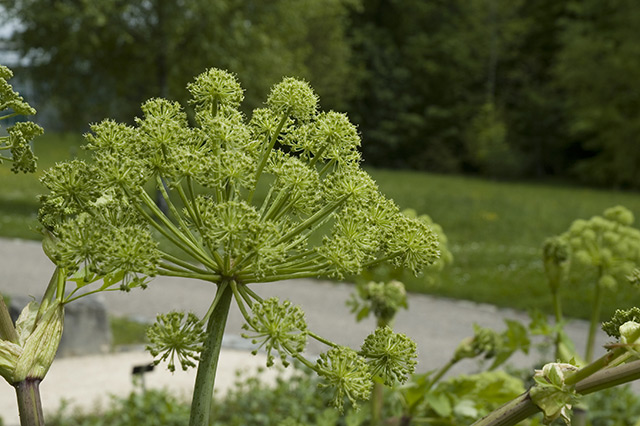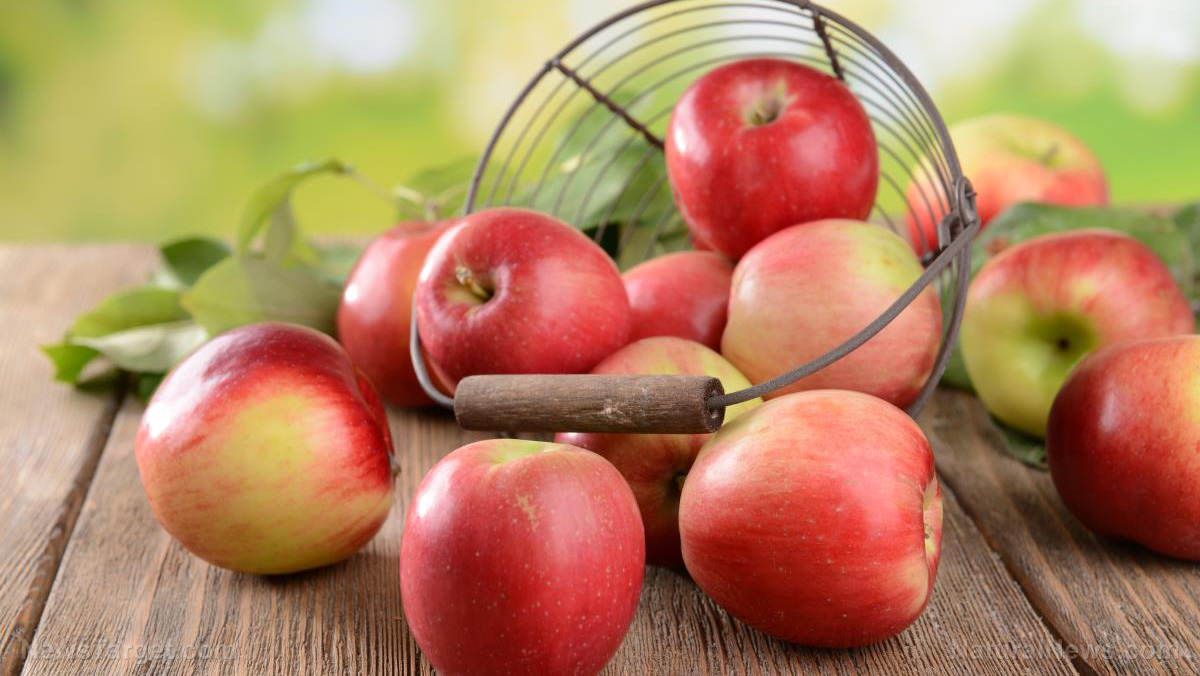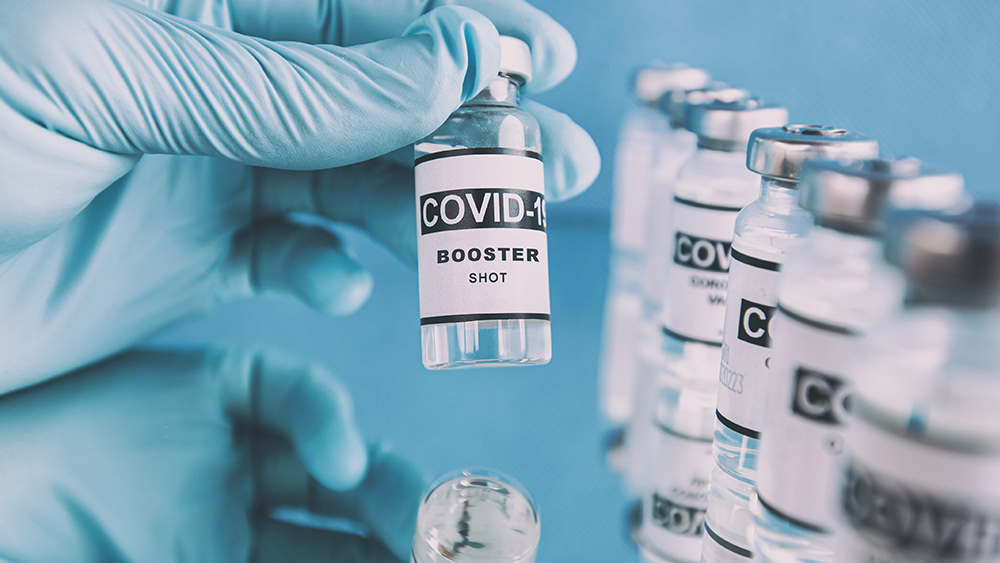Angelica: The divine herb bridging traditional medicine and modern wellness
05/24/2025 / By Ava Grace

- Angelica (Angelica archangelica) is an herb native to the Northern Hemisphere that is known for its medicinal and culinary properties. It features bipinnate leaves, tall stems and umbrella-like flower clusters, and is rich in phytonutrients like coumarins, flavonoids and polysaccharides.
- Named after the Latin word angelus (angel), angelica has a storied history tied to folklore and traditional medicine. It was believed to be a divine remedy for the plague and has been cultivated since the 12th century in regions like Iceland, Scandinavia and Greenland. It holds cultural importance in Icelandic and Sami traditions.
- Angelica offers numerous health benefits, including aiding digestion, relieving respiratory issues, reducing inflammation and pain, supporting immune function and alleviating menstrual and menopausal symptoms. Its bioactive compounds contribute to its anti-inflammatory, antioxidant and antimicrobial properties.
- Angelica can be used to make teas and tinctures and is also available in capsules or as an essential oil. An excellent culinary ingredient, angelica can be used to make candied stems, infused honey and liqueurs like Chartreuse. Its essential oil is used in aromatherapy for relaxation and stress relief.
- Angelica is celebrated across cultures under various names, such as “Holy Ghost Root” and “Dong Quai.” In Iceland, it symbolizes resilience and survival. Its unique flavor can enhance both sweet and savory dishes.
Angelica (Angelica archangelica), a towering biennial or perennial herb native to the temperate and subarctic regions of the Northern Hemisphere, has long been revered for its medicinal and culinary properties. With its striking bipinnate leaves, long stems and umbrella-like clusters of white or greenish-white flowers, angelica is not only a botanical marvel but also a powerhouse of phytonutrients and healing compounds.
Brief history of angelica
Angelica’s history is as rich as its medicinal properties. The plant’s name is derived from the Latin word angelus, meaning “angel,” and is steeped in folklore. Legend has it that Angelica was revealed to a monk in a dream by the Archangel Michael as a remedy for the plague during the Middle Ages. This divine association earned it the name Angelica archangelica.
Historically, angelica was widely cultivated in Iceland, Greenland and Scandinavia, where it thrived in cool, damp climates. The plant was also widely used by the Sami people of Sápmi and the Inuit of Greenland, who valued it for its nutritional and medicinal properties. (Related: Angelica may be good for men, but it is truly beneficial to women’s health).
Angelica’s medicinal use was first documented in European herbal texts around the 12th century. By the 17th century, it had become a staple in monastic gardens and apothecaries across Europe. Today, it is cultivated in temperate regions worldwide, including parts of North America, Europe and Asia.
Angelica is known by many names, reflecting its widespread use and significance. Some of its monikers include:
- Holy ghost root – a name that reflects its divine associations
- Wild celery – due to its resemblance to celery
- Norwegian angelica – a nod to its prevalence in Scandinavia
- Dong Quai – a closely related species, A. sinensis, used in Traditional Chinese Medicine bears this name
In Iceland, angelica is known as hvönn and holds a special place in folklore. During the 17th century, Icelandic settlers relied on angelica as a vital source of nutrition and medicine. It was said that during harsh winters when food was scarce, angelica’s roots and stems provided sustenance and prevented scurvy. To this day, it remains a symbol of resilience and survival in Icelandic culture.
Phytonutrients and health benefits
Angelica is a treasure trove of bioactive compounds, including coumarins, flavonoids and polysaccharides. These phytonutrients contribute to its anti-inflammatory, antioxidant and antimicrobial properties. Key compounds found in angelica include:
- Coumarins – Known for their blood-thinning and anti-inflammatory effects
- Flavonoids – Potent antioxidants that protect cells from oxidative stress
- Essential oil components – Including limonene and pinene, which have antimicrobial and digestive benefits.
- Polysaccharides – Compounds that support immune function and gut health
Angelica is traditionally used to address a wide range of ailments. Modern research supports many of these uses, highlighting its potential to prevent or alleviate conditions such as:
- Digestive disorders – Angelica is known to stimulate appetite, relieve bloating and ease indigestion. Its essential oils and bitter compounds promote the production of digestive enzymes.
- Respiratory issues – The plant’s expectorant properties make it effective in treating coughs, colds, and bronchitis.
- Inflammation and pain – Angelica’s anti-inflammatory compounds can help reduce joint pain and muscle soreness, making it a natural remedy for arthritis and rheumatism.
- Infections – The polysaccharides in angelica can enhance immune function, helping the body fight infections.
- Menstrual and menopausal symptoms – Angelica has been used to regulate menstrual cycles and alleviate symptoms of menopause, such as hot flashes and mood swings.
Angelica is used in various forms, including teas, tinctures, capsules and essential oils. In traditional medicine, angelica’s roots, seeds and leaves are often dried and brewed into teas or decoctions. The essential oil is used in aromatherapy to promote relaxation and relieve stress. In culinary applications, Angelica’s stems and leaves are candied or used to flavor liqueurs, such as Chartreuse and Benedictine.
Culinary uses and recipe ideas
Angelica’s unique flavor — sweet, earthy and slightly bitter — makes it a versatile ingredient in sweet and savory dishes. Here are some recipe ideas featuring angelica:
- Candied angelica stems – A traditional confectionery treat, often used to decorate cakes and pastries.
- Angelica-infused honey – A soothing remedy for sore throats and coughs.
- Angelica and citrus tea – A refreshing beverage that combines the herb’s earthy notes with the brightness of citrus.
- Angelica-roasted root vegetables – A savory side dish that highlights the herb’s aromatic qualities.
- Angelica liqueur – A homemade digestif that captures the essence of this ancient herb.
Angelica is more than just a towering herb with striking flowers; it is a testament to the healing power of nature. From its rich history and cultural significance to its impressive array of phytonutrients and health benefits, angelica continues to captivate and heal. Whether used in traditional medicine, modern wellness practices or gourmet cuisine, this remarkable plant remains a beacon of resilience and vitality.
This story is not medical advice and is not intended to treat or cure any disease. Always consult with a qualified naturopathic physician for personalized advice about your specific health situation or concern.
Visit NaturalNews.com, a great article source where you can learn about superfoods and their health benefits.
You can also try Brighteon.ai, an AI model created by Mike Adams, also known as the Health Ranger. This model is available as a free download to be run locally and is designed to help share and decentralize knowledge. By doing so, it aims to bypass censorship and empower people with knowledge.
If you’re looking for an uncensored video free speech website where you can openly discuss nutrition, natural medicine, ingredients and more, check out Brighteon.com and our two free speech social media sites, Brighteon.IO and Brighteon.social.
Watch this video to learn more about the benefits and uses of angelica.
This video is from the Holistic Herbalist channel on Brighteon.com.
More related stories:
Researchers study the anti-inflammatory properties of garden angelica essential oil.
Exploring the anti-inflammatory properties of garden angelica essential oil.
This TCM formula alters brain pathways to alleviate anxiety-like behavior.
New study shows the powerful anticancer effects of Korean angelica.
The Angelica root is a popular TCM herb for treating obesity.
Sources include:
Submit a correction >>
Tagged Under:
alternative medicine, angelica, health science, herbal medicine, Herbs, natural cures, natural health, natural medicine, Naturopathy, organics, phytonutrients, plant medicine, remedies
This article may contain statements that reflect the opinion of the author





















